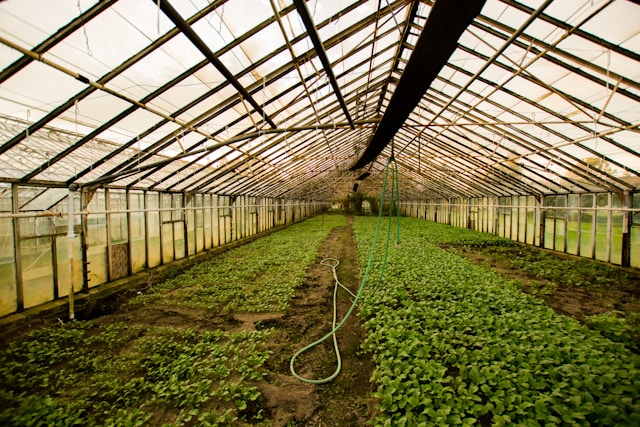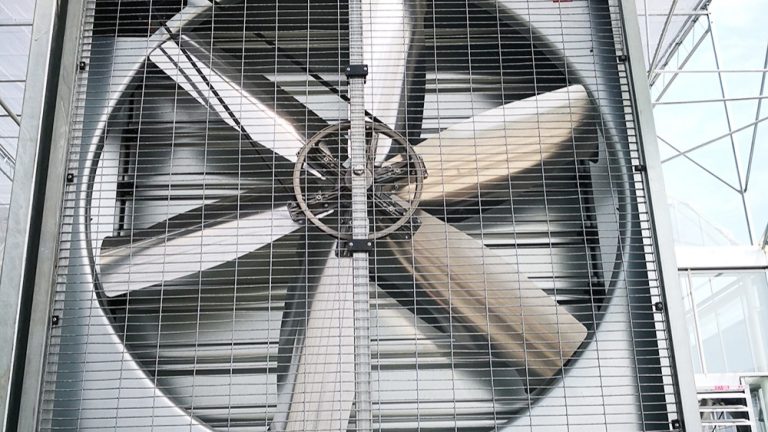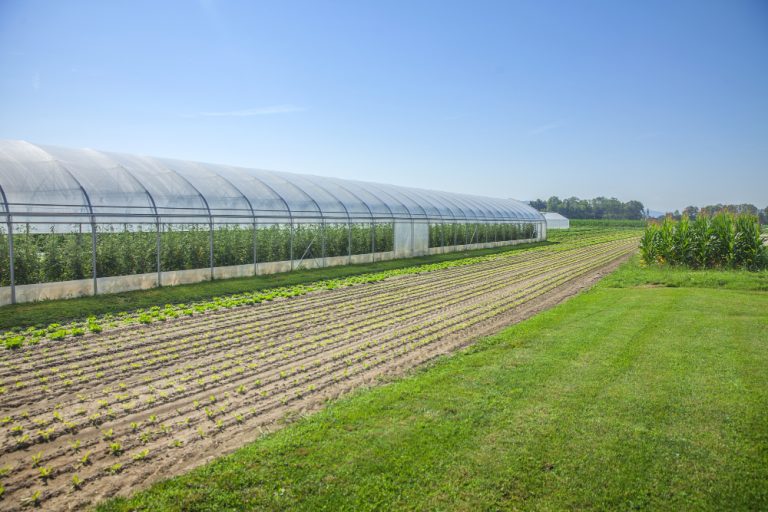
Key Points
- It seems likely that starting a small commercial greenhouse requires careful planning, including gaining experience and choosing the right location.
- Research suggests focusing on a single crop initially can simplify management, while understanding local demand and regulations is crucial.
- The evidence leans toward investing in climate control and pest management for success, with startup costs potentially ranging from $60,000 to over $200,000.
Business Planning and Experience
Starting a small commercial greenhouse involves developing a solid business plan, including market research and financial projections. If you’re new to commercial growing, it’s advisable to gain experience by working for an existing greenhouse operation to understand the scale and demands. Startup costs can vary widely, typically ranging from $60,000 to over $200,000, with annual operating expenses of $20,000–$50,000 for a small setup, so budgeting is key.
Site Selection and Design
Choose a location with at least 2 acres for facilities and access, ideally south-facing for maximum sunlight, with utilities like electricity and water nearby. The greenhouse size might be around 1,000 square feet, and investing in climate control systems (heating, cooling, lighting, irrigation) is essential for optimal plant growth.
Crop Choice and Management
Select crops based on local demand, such as tomatoes, lettuce, or herbs, which can be profitable. Starting with a single crop can simplify watering, fertilizing, and pest management. Develop a plan for pests and diseases using resources like the “New England Greenhouse Floriculture Guide” (New England Guide).
Regulations and Marketing
Ensure compliance with local zoning and obtain necessary licenses, including for pesticides if needed. Identify sales channels like farmers’ markets or wholesale, and build a marketing strategy highlighting niche crops or sustainability.
Comprehensive Report on Starting a Small Commercial Greenhouse
Starting a small commercial greenhouse is a rewarding venture that requires careful planning, practical experience, and strategic decision-making. This report provides a detailed overview of the key considerations, drawing from authoritative sources to ensure a thorough understanding for aspiring greenhouse entrepreneurs. The information is organized into categories to address all aspects of starting and managing a small commercial greenhouse, with specific details on costs, crop selection, and regulatory requirements.
Experience and Business Planning
Before launching, it is crucial to gain commercial-scale plant growing experience. If you lack this, working for an existing commercial grower is recommended to understand the operational scale and challenges. This step is vital, as highlighted by UMass Amherst – Starting a Greenhouse Business, which emphasizes the need for hands-on knowledge.
Developing a comprehensive business plan is the foundation of success. This plan should include market research to identify local demand, cost calculations, and financial projections. For instance, Backyard Oasis – How to Make Money with a Greenhouse notes that startup costs can range from $60,000 to over $200,000, depending on size and features, with annual operating expenses of $20,000–$50,000 for a small commercial greenhouse. A breakdown of typical startup costs is provided below for clarity:
| Item | Estimated Cost |
|---|---|
| Greenhouse Structure | $15,000–$100,000 |
| Heating and Cooling Systems | $5,000–$15,000 |
| Irrigation System | $2,000–$5,000 |
| Seeds and Transplants | $500–$2,000 |
| Soil and Containers | $1,000–$3,000 |
| Tools and Supplies | $1,000–$5,000 |
| Permits and Licenses | $500–$2,000 |
| Total | $25,000–$150,000 |
Consulting local agencies for small business regulations and accounting, as suggested by UMass Amherst, ensures compliance and financial readiness.
Site Selection and Greenhouse Design
Site selection is critical for profitability, as outlined in UMass Amherst – Design and Layout of a Small Commercial Greenhouse Operation. A minimum of 2 acres is needed to accommodate facilities, outdoor growing areas, access, parking, and buffers. The site should be south-facing for maximum sunlight, with access to electrical, gas, and water utilities, and located near markets, labor, and transportation routes. A well-draining, wind-protected location is also essential to protect crops.
The greenhouse size for a small commercial operation is typically around 1,000 square feet, as noted by Backyard Oasis, which is affordable for diverse crop cultivation. Design considerations include the type of structure and climate control systems. Heating can be achieved with hot water pipes or electric/gas furnaces, while cooling may involve ventilation, shade cloths, misting, or air conditioners. Lighting, especially LEDs for darker months, and irrigation systems (drip, misters, or hand-watering) are also necessary, as detailed in the same source.
For further guidance, refer to UMass Amherst – Selecting and Building a Commercial Greenhouse, which provides insights into planning and construction.
Crop Selection and Production
Choosing the right crops is pivotal for profitability. Research suggests focusing on high-demand crops based on local supply and demand, as advised by UMass Amherst. Examples include tomatoes, lettuce, cucumbers, peppers, herbs, microgreens, leafy greens, berries, and edible flowers, which can produce over $25 per square foot in annual sales under optimal conditions, according to Backyard Oasis. Mother Earth News – Secrets to a Successful Greenhouse Business recommends starting with a single large crop (e.g., 10,000 plants of one type) rather than assorted varieties to simplify management, given the differing needs for watering, spraying, fertilizing, and shading.
Demand for certain crops, such as herbs and hydroponic vegetables, has increased by 300 percent, and tree seedlings are also in great demand, as noted in the same Mother Earth News article. To determine crop costs, use metrics like $/ft²/week, $/unit, or $/unit labor, and consult resources like Calculating Crop Costs for detailed guidance.
Crop production scheduling is another key aspect. Schedule seed shipments mid-October for backorders and maintain records using spreadsheets, including seed source, trays, and containers, as suggested by UMass Amherst.
Regulations, Licenses, and Insurance
Compliance with regulations is non-negotiable. Obtain zoning regulations, business licensing, and special use permits, and ensure you have liability insurance, product liability insurance, and, if hiring, workers’ compensation insurance. For edible crops, comply with health codes. If using pesticides, a pesticide license is required for Restricted Use Pesticides (RUP), and handler training is needed for General Use Pesticides, as detailed in UMass Amherst – Starting a Greenhouse Business. Check Pesticide Licensing for state-specific requirements.
Backyard Oasis also emphasizes the importance of permits and licenses, with estimated costs of $500–$2,000, and advises checking their greenhouse buyer’s guide for permitting details.
Pest and Disease Management
Effective pest and disease management is crucial for crop health. Use the “New England Greenhouse Floriculture Guide” for managing insects, diseases, and weeds, available at New England Guide. Additional resources include pest photos at UMass Extension/UConn Extension Photo Library and fact sheets at UMass Extension Pest Management Page. For organic production, consult Organic Greenhouse Production.
If diseases arise, contact the Plant Diagnostic Laboratory or an Extension Specialist at UMass Extension Greenhouse Crops and Floriculture Program for diagnosis.
Marketing, Sales, and Financial Management
Marketing and sales strategies are vital for revenue generation. Identify sales channels such as farmers’ markets, farm stands, Community Supported Agriculture (CSAs), stores, restaurants, floral shops, online platforms, or wholesale to local markets, as suggested by Backyard Oasis. Diversify based on crops, volume, and location. Highlight niche crops, specialized methods, or sustainability in your marketing, and build a brand with a logo, packaging, and social media presence, such as Google My Business. Networking with local growers can enhance visibility.
Financial management is equally important. Track expenses and revenues, monitor net profit margins, optimize pricing, and manage cash flow, especially for seasonal fluctuations. Analyze financial statements annually to identify areas for improvement, as advised by Backyard Oasis.
Continuous Learning and Resources
Staying informed is key to long-term success. Attend conferences like the Northeast Greenhouse Conference or explore educational programs at UMass Extension Upcoming Events. Reference books such as “Ball Redbook” (18th ed., vol. 2 by Jim Nau, available at Ball Bookshelf), “Greenhouse Operation and Management” (2007, 7th ed., P.V. Nelson), and “Floriculture: Principles and Species” (2005, J.M. Dole, H.F. Wilkins) are valuable. Trade magazines like “Grower Talks,” “Greenhouse Grower,” and “GMPro” provide industry updates.
For vegetable crops, explore Growing Vegetable Crops in High Tunnels, Greenhouse Tomato Budgets, Organic Greenhouse Vegetable Production, and UMass Extension Vegetable Program. Horticulture math for containers and media is available from UMass Extension, ensuring comprehensive support for all aspects of greenhouse management.
This report provides a strict superset of the direct answer, ensuring all details are covered for a thorough understanding of starting a small commercial greenhouse.




